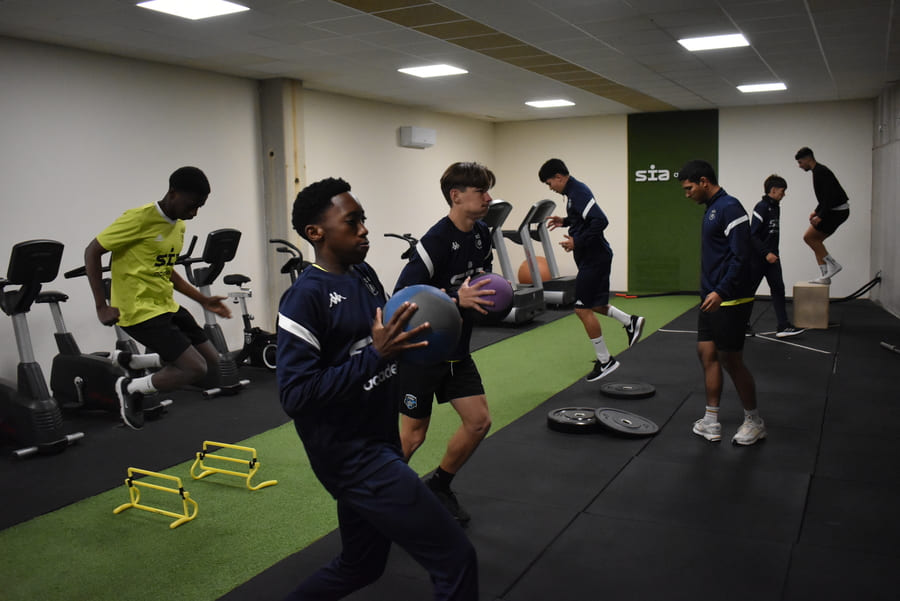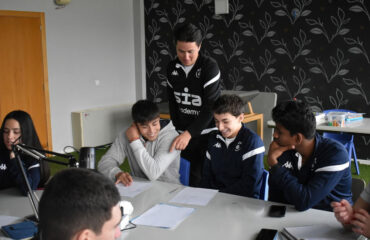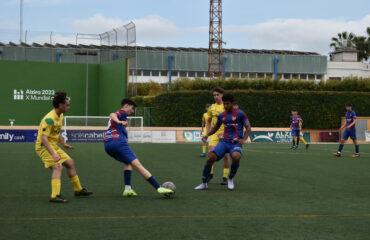Soccer is a highly demanding sport in terms of endurance, speed, strength and agility. Throughout a match, players perform intense and repetitive movements, such as sprints, changes of direction and jumps, which place considerable strain on muscles, joints and connective tissues. This physical stress increases the risk of injury, particularly to the knees, ankles and hamstrings. To mitigate these risks, strength training has become a fundamental tool, not only to reduce the likelihood of injury, but also to optimize athletic performance. In this article, we explore how muscle strengthening can contribute to injury prevention in soccer players, the specific benefits it provides and recommended exercises based on science.
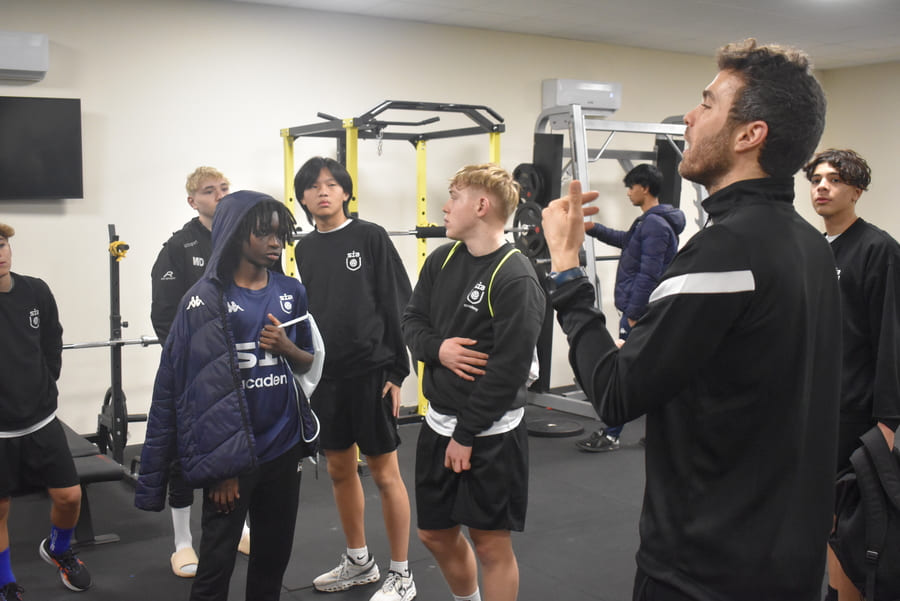
Table of contents
Benefits of strength training for soccer
Prevention of injuries
Injury prevention is one of the main goals of strength training in soccer. Studies in the American Journal of Sports Medicine show that a well-structured strength program significantly reduces the incidence of injuries, especially in the hamstrings, knees and ankle joints (Petersen et al., 2011). Strength exercises help strengthen the muscles surrounding these joints, providing additional support and reducing the direct load on ligaments and tendons. For example, gluteal and quadriceps strengthening exercises have been shown to be effective in reducing the risk of knee injuries, such as anterior cruciate ligament (ACL) injury, one of the most common and serious injuries in soccer.
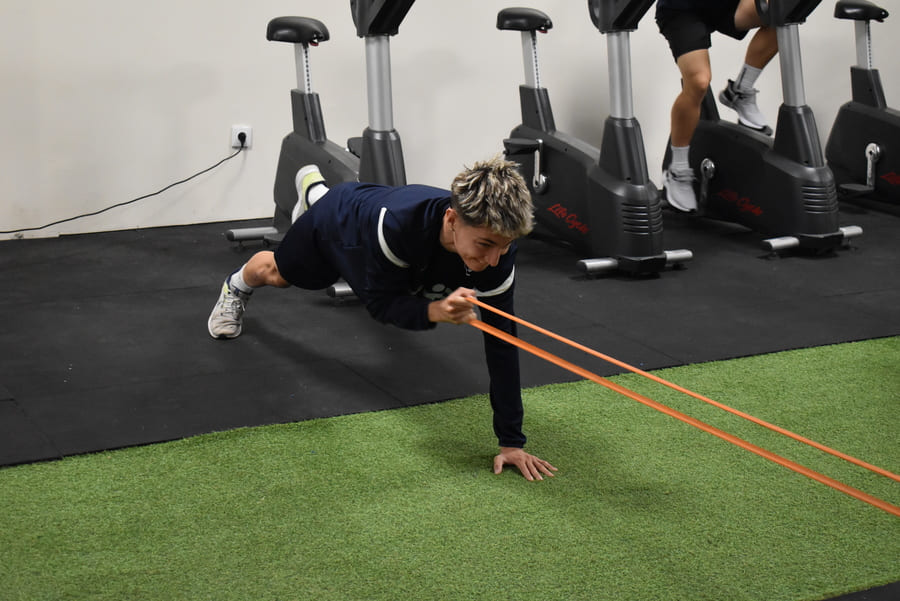
Improved stability
Stability is a key component for soccer players, who must perform quick and complex movements, such as changes of direction and explosive turns. A good level of strength in the stabilizing muscles, especially in the core (central area of the body), allows the player to maintain control and posture during these movements. According to research in Sports Medicine, strength training that includes core and stability exercises improves proprioception (body awareness), which is critical to avoid injury in sudden movement situations (Behm et al., 2010). A strong core also protects the spine and helps distribute loads evenly during play.
Improved performance
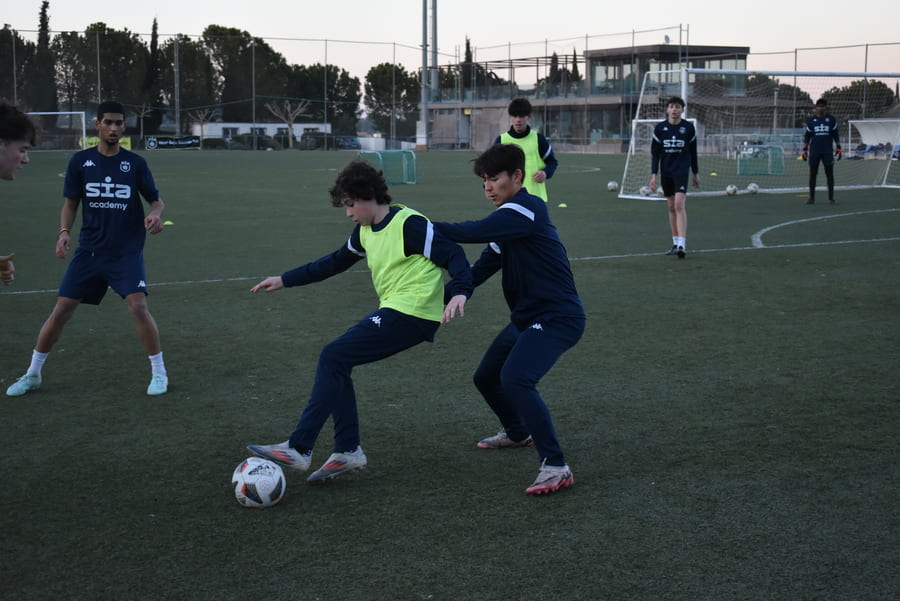
In addition to injury prevention, strength training contributes to improved physical performance in soccer. Increasing muscle strength and power allows players to run faster, jump higher and resist fatigue during the game. A study published in the Journal of Strength and Conditioning Research showed that soccer players who incorporate strength training into their routine have superior performance in sprints, jumps, and agility tests compared to those who do not (Comfort et al., 2012). This is especially relevant in the context of soccer, where explosiveness and speed are critical skills for success on the field.
Recommended strength training exercises for soccer players
For strength training to be effective in preventing injury and improving performance, it is essential that it includes specific exercises that are adapted to the physical demands of soccer. Some of the most recommended exercises and their specific benefits are described below.
Squats and deadlifts
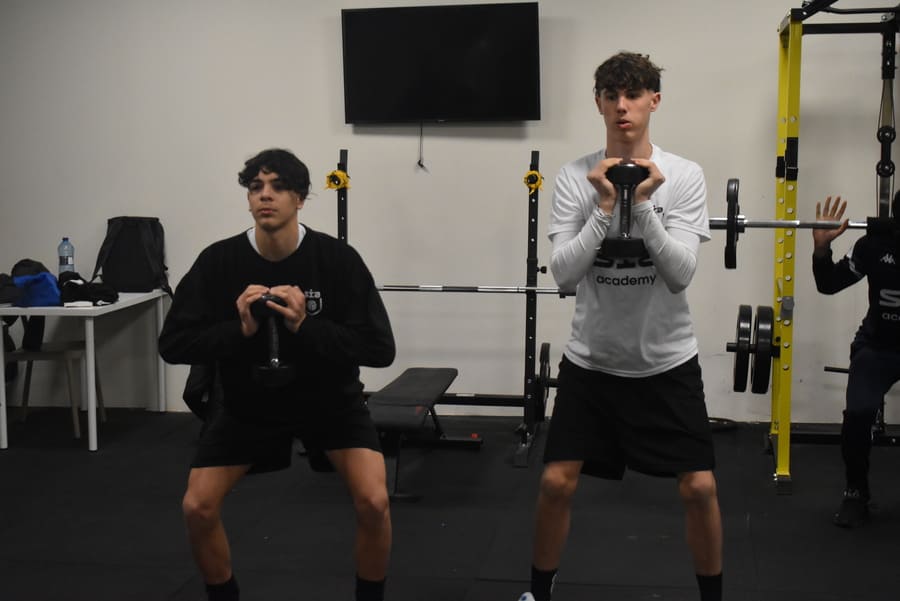
Squats and deadlifts are strength exercises that involve large muscle groups, including the quadriceps, glutes and hamstrings. These exercises not only strengthen the legs, but also improve hip stability and body posture. Properly performing these movements helps to increase power in jumps and sprints, as well as protect the knee and hip joints from injury. Studies in the Journal of Orthopaedic & Sports Physical Therapy suggest that both the squat and deadlift improve functional strength and are effective in preventing lower limb injuries (Escamilla et al., 2001).
Core exercises
Core exercises, such as planks, crunches and Russian twists, are essential for improving trunk stability and a player’s overall posture. A strong core acts as a stable base for all body movements, from sprints to shots on goal. In addition, core strengthening helps to better distribute the load between the upper and lower body, which is crucial to avoid overloading the spine and extremities. According to the Journal of Physical Therapy Science, core training reduces the incidence of lower back injuries and improves efficiency in sports movements (Akuthota et al., 2008).
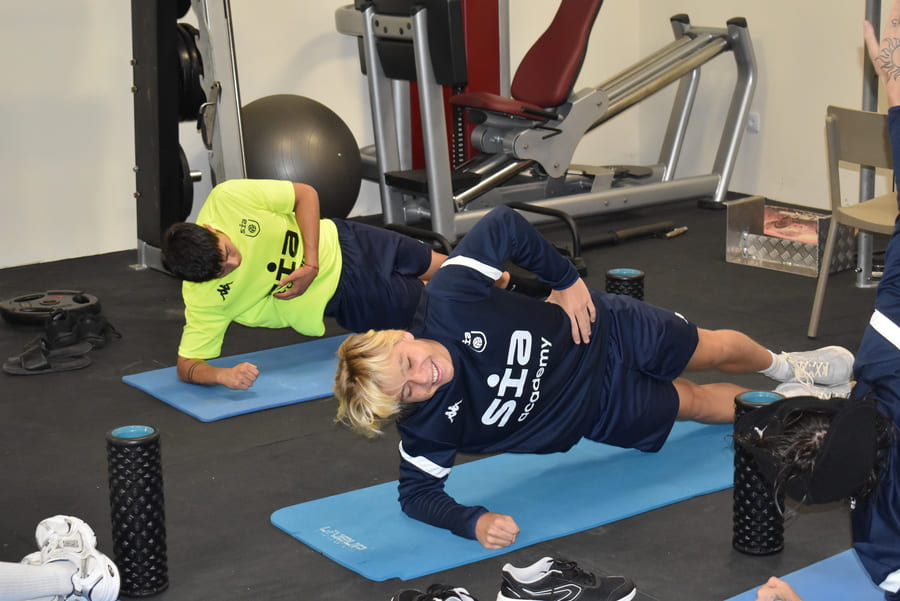
Functional training
Functional training includes specific movements that simulate actions performed on the playing field, such as jumps, changes of direction and sprints. Exercises such as plyometric jumps, short sprints and changes of direction are examples of functional training that improve explosiveness and agility. These exercises help the soccer player adapt to the physical demands of the game and improve their ability to respond to unexpected movements. Research published in Strength and Conditioning Journal supports that functional training improves intermuscular coordination and neuromuscular efficiency, key factors in preventing injury and optimizing performance in high-intensity sports (Bompa and Buzzichelli, 2015).
Strategies for implementing strength training in the routine of soccer players.
To maximize the benefits of strength training in soccer players, it is important that strength training is performed in a structured and progressive manner. Some key strategies include:
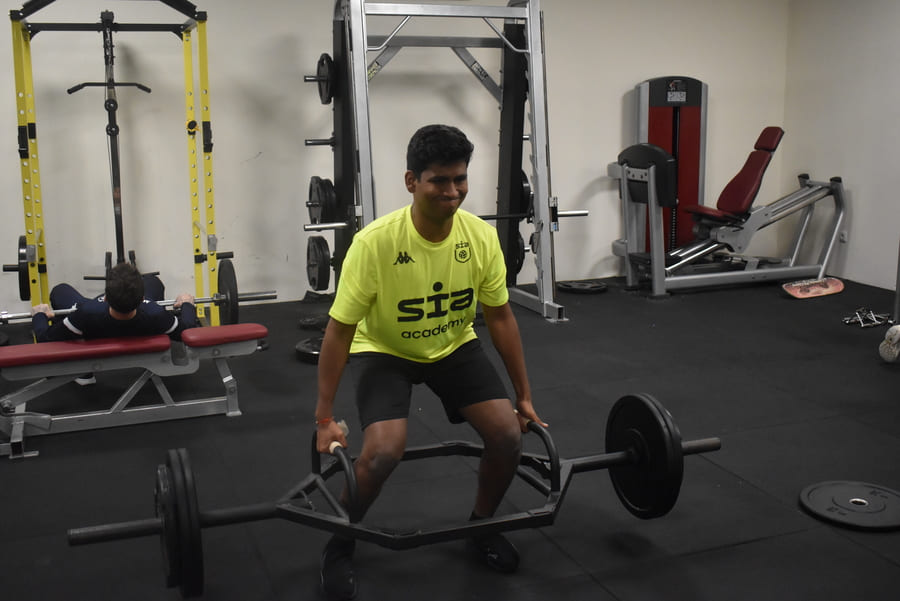
Gradual load progression
Load progression is essential to ensure that the muscles adapt without overloading. Starting with moderate loads and gradually increasing the weight, intensity or complexity of the exercises allows the soccer player to safely develop strength. Research suggests that progressively increasing the load reduces the risk of overuse injuries and improves muscle adaptation (Haff and Triplett, 2015).
Integration of flexibility and mobility exercises
Along with strength training, flexibility and mobility exercises are crucial to maintain proper range of motion in the joints. Lack of flexibility can limit performance and increase the risk of muscle injuries, especially in the hamstrings and lower back. A study in the Scandinavian Journal of Medicine & Science in Sports highlights that training programs that include flexibility and strength work have lower injury rates in soccer players (Soligard et al., 2008).
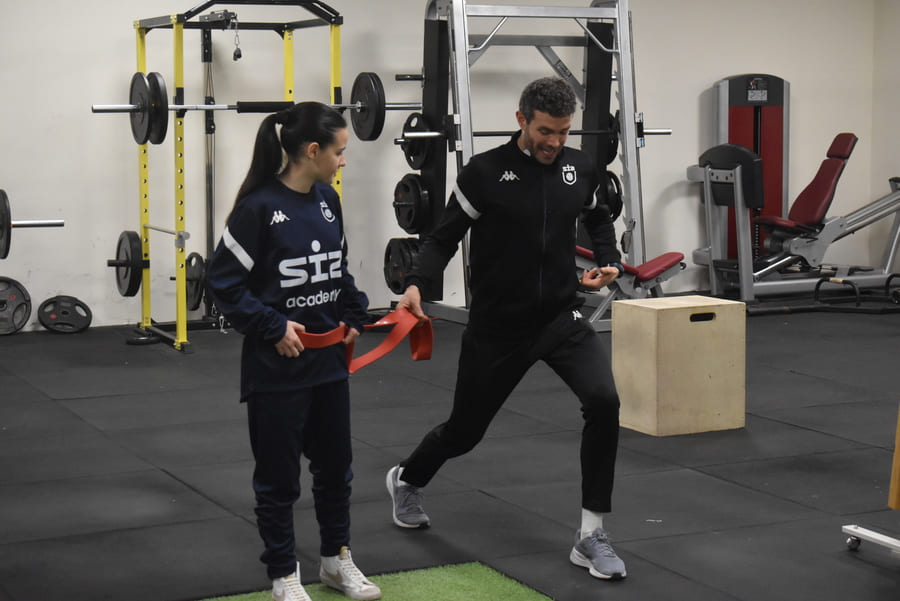
Continuous monitoring and adjustment
It is essential that strength training is monitored by a trainer or physiotherapist who can adjust the exercises and load according to the individual needs of the player. Regular monitoring allows for the identification of muscle imbalances, signs of fatigue or discomfort that could indicate the risk of injury. A personalized approach ensures that the training program is tailored to the physical characteristics of the player and the demands of his position on the field.
Strength training is a fundamental component in the physical preparation of soccer players, as it not only contributes to improving performance, but is also key to injury prevention. By strengthening muscles and improving joint stability, players are less prone to injury, especially in vulnerable areas such as the knees, ankles and hamstrings. Exercises such as squats, deadlifts, core movements and functional training have proven to be effective in physical conditioning and injury protection. Implementing a well-structured strength training program supervised by trained professionals can make a huge difference in a soccer player’s career, allowing them to perform to the best of their ability and significantly reduce the risk of injury. In the competitive world of soccer, strength and injury prevention have become indispensable elements in achieving success and longevity in the sport.
Author: Josep Ferri
Physiotherapist at SIA Academy



